Chapter 1: Overview of Nonprofit Cloud
Nonprofit Cloud from Salesforce is a collection of applications designed specifically for nonprofit organizations to extend and adapt the power of Salesforce's Customer Relationship Management (CRM). Each nonprofit and charity may have a different mission, specific goals, or even unique measures of success. Consequently, Nonprofit Cloud has a lot of moving parts. Let's start by taking some time to look at the big picture with a high-level overview of the moving parts that make up Nonprofit Cloud. What do these parts or components do? How do they fit into the larger bucket of Nonprofit Cloud and the Salesforce CRM itself? And how do I know which components to use and when? Which components are included as part of the Power of Us donation from Salesforce? And which are paid add-ons?
As a Salesforce administrator, you have already explored the foundation for what we are going to learn. Nonprofit Cloud utilizes all that learning but adds additional layers of flexibility, configuration, and complexity to meet the needs of nonprofits. Understanding Nonprofit Cloud will give you the tools to help nonprofits and charities increase their impact using Salesforce as well as assist in your study for the Nonprofit Cloud Consultant certification.
In this chapter, we're going to cover the following main topics:
- The making of Nonprofit Cloud
- Fundraising features
- Program management features
- Additional features
- The making of Nonprofit Cloud
Let's take a quick look at the origins of Nonprofit Cloud and the cornerstone it is built upon – Nonprofit Success Pack.
The making of Nonprofit Cloud
From the very beginning in 1999, Salesforce made a commitment to nonprofits and charities around the world. That commitment encompassed 10 free Salesforce licenses provided by the Salesforce Foundation. There are geographic limitations to the 100 Enterprise license donations; see the eligibility guidelines at https://www.salesforce.org/power-of-us/eligibility-guidelines/. Although nonprofits had similar requirements around what a customer relationship management platform should do, those requirements were not always easily met within the standard Salesforce architecture that was focused on corporate use cases.
As more nonprofits began to embrace Salesforce to automate processes, implementations varied wildly and became more and more expensive to maintain. As I have worked with nonprofits, I have seen the standard Salesforce Account functionality used. However, I've also seen other iterations designed to adapt the data structure to be more useful to donors and members rather than customers. For example, the bucket model was used to accommodate individuals at one point. This was before Person Accounts were introduced by Salesforce. There was one account named Individual and, you guessed it, individual contacts were assigned to that account. As with all things Salesforce, there are limits. As a Salesforce administrator, you know that best practices recommend a maximum of 10,000 child records. Hundreds of thousands of donor or volunteer contact records, all associated with the Individual account record, can cause challenges. This was just one area that needed a solution.
Other nonprofits, with more resources, began to customize Salesforce to meet their needs. New York Cares – an early nonprofit adopter of Salesforce – hired Avviato, Inc. to help design, build, and implement a data structure very similar to what would become Nonprofit Starter Pack. In 2009, Contributor Development Partnership and roundCorner partnered to build the NGO Connect app on Salesforce. The fundraising software was used by dozens of public broadcasting stations and other nonprofits. Once again, the data structure and functionality hinted at what was to come in Nonprofit Starter Pack's initial offering. However, these early implementations make it very time-consuming and complex to migrate customers to Nonprofit Success Pack because there are so many conflicting triggers that must be resolved.
What we know today as Salesforce.org started out as the Salesforce Foundation, and, as already mentioned, they handled the donation of 10 Salesforce Enterprise licenses for any qualifying nonprofit organization as part of Salesforce's original Pledge 1% model. In 2019, Salesforce.org was acquired by Salesforce.com; so, when we refer to Salesforce.org, it is in reality a team within the larger Salesforce ecosystem.
It didn't take long to realize that nonprofits needed more than just a Salesforce instance; they needed it configured to better meet their needs. What was then known as Nonprofit Starter Pack was conceived and created as an open source application on Salesforce. It was created by volunteers and community members who were anxious to help nonprofits succeed with Salesforce. It went through a couple of iterations before it became Nonprofit Success Pack, now maintained by Salesforce.org, with minor bug-fix releases every other week as well as the three major releases per year – not bad for a free product! The following is a brief history of NPSP:

Figure 1.1 – A timeline of Salesforce's Nonprofit Success Pack
Nonprofit Starter Pack (NPSP) consisted of five separate apps – all free and open source. NPSP is important to understand because it sets the data architecture as well as the core functionality for today's Nonprofit Cloud. NPSP focuses primarily on fundraising and donor management, and includes basic reporting and analytics. Improvements to NPSP with core donation management, donor engagement, and basic reporting and analytics prompted a rebranding, and NPSP 2.0 was born and launched. The following is the way the NPSP apps originally looked in the installed packages section of the Salesforce setup:
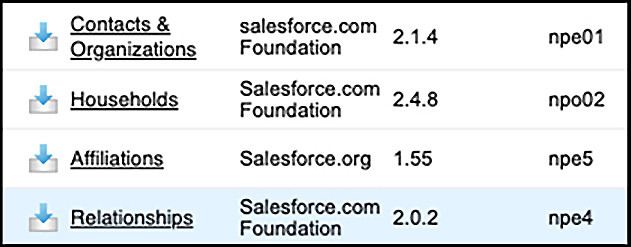
Figure 1.2 – Original objects for NPSP
Nonprofit Success Pack (3.0) is now on AppExchange as a complete integrated suite that includes Lightning Experience as well as a robust partner ecosystem, with a great number of ways to extend the functionality of NPSP. It is the core of Nonprofit Cloud, but Nonprofit Cloud comprises so much more. Originally announced in 2018, Nonprofit Cloud is advertised as the one place to work with all nonprofit relationships (see https://www.salesforce.org/nonprofit/), using tools for fundraising, program management, and marketing and engagement:
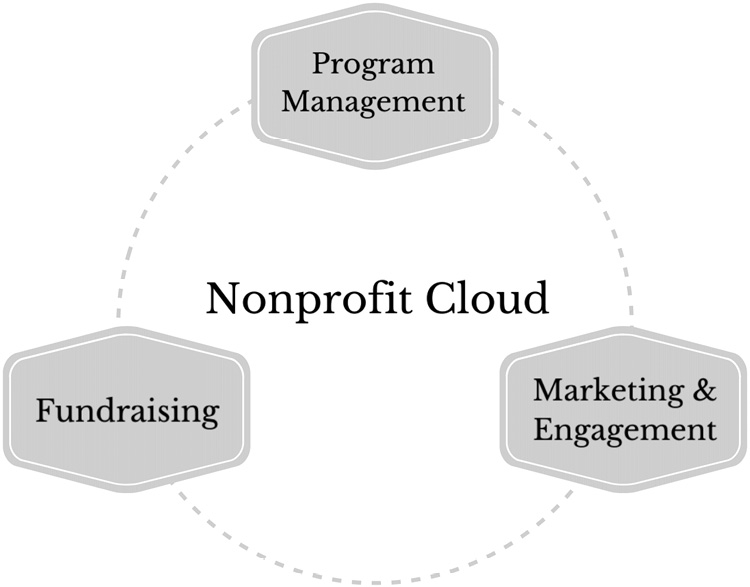
Figure 1.3 – The three pillars of NPSP
Throughout the course of this book, we will explore, in depth, the following areas of Nonprofit Cloud:
- Nonprofit Success Pack
- Fundraising
- Program management
- Volunteer management
You will be able to ascertain when to use these tools, how to implement them, and how to configure them for the organization.
Subsequent chapters will also include learning around additional functionalities:
- Grantmaking and grants management
- Insights
- Elevate
- Accounting subledger
- Marketing and engagement
Important Note
These add-on modules may be free or paid. Some are part of the Open Source Community Sprints and others Salesforce donates to nonprofit organizations.
The other important part of Nonprofit Cloud – beyond the core architecture, packaged functionality, and configuration – is the ability to customize the functionality. Trigger Driven Management Tables (TDTM) plays an important role in Nonprofit Cloud and may be a new concept to Salesforce administrators.
We've got a lot to cover, so let's get started!
Fundraising features
Fundraising was the initial use case when the community started work on Nonprofit Success Pack in 2008. Understanding donor behavior seemed to be a great fit for a customer relationship management system, that is, Salesforce. However, donors donate individually rather than in conjunction with their employer. There are some notable exceptions, such as United Way's use case for corporate-driven pledges and employer-matching gifts, which we will explore in Chapter 10, Configuring Fundraising Features.
The pain point was that the standard Salesforce data structure is focused on accounts. Accounts equate to businesses. And, as mentioned, donors generally give individually. Sometimes donors give as a family. And donor campaigns often target those individuals living at the same physical address. Donors may also give at work or be instrumental in influencing corporate entities to donate. In today's environment, donors want an easy way to donate online but there are those donors who are still more comfortable mailing a check.
Fundraisers employ many strategies to meet their revenue goals; each strategy may require different data and tracking. You begin to see how quickly the situation can become complicated.
Nonprofit Success Pack starts with these considerations in mind and uses many standard Salesforce objects you already know and love as the base for fundraising features:
- Account: An object that holds information about companies
- Contact: An object that holds information about individuals
- Opportunity: An object that holds information about sales
- Campaign: An object that holds information about marketing initiatives, responses, and metrics
The following figure shows the relationships and fields for the four standard Salesforce objects just discussed:
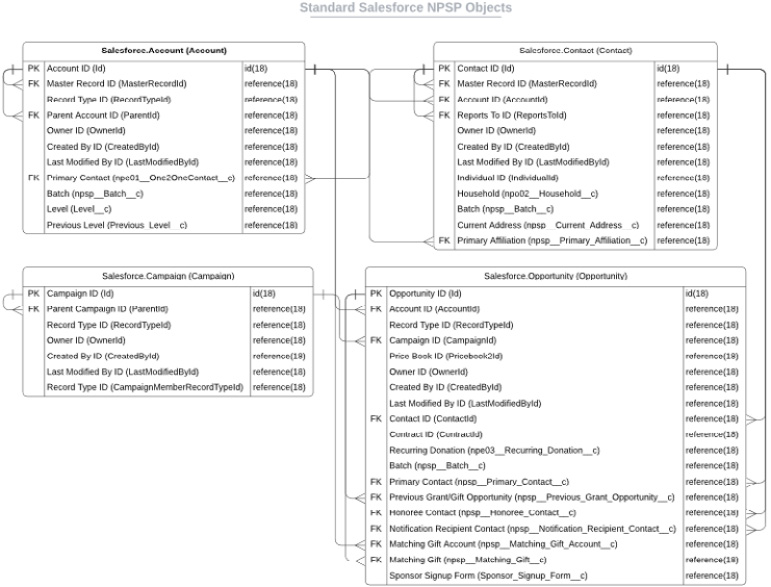
Figure 1.4 – An entity-relationship diagram of standard Salesforce objects used in Nonprofit Success Pack
Configuring the NPSP settings appropriately to handle your organization's use cases requires understanding the use case requirements as well as the settings themselves. We'll get into great detail on the ways to determine what the settings should look like when we install and configure NPSP in Chapter 9,Install Nonprofit Cloud Solutions.
Here is an outline of the various settings we will learn to appropriately configure the Nonprofit Success Pack fundraising features:
- Account Model: This will provide the basis of the rest of the data architecture.
- Households: This is the most common and currently recommended account model used with NPSP and allows the following settings.
- Addresses: This is a custom object in NPSP to allow more than one address.
- Lead Settings: These provide the basis of potential donor information.
- Relationships: This object provides context for how people are connected to people.
- Donations: This is the standard opportunity object renamed.
- Recurring Donations: This is a custom object in NPSP to track recurring donations.
- Bulk Data Processes: These settings establish various automated processes throughout NPSP.
All these settings are found on the NPSP Settings page in the Nonprofit Salesforce instance:
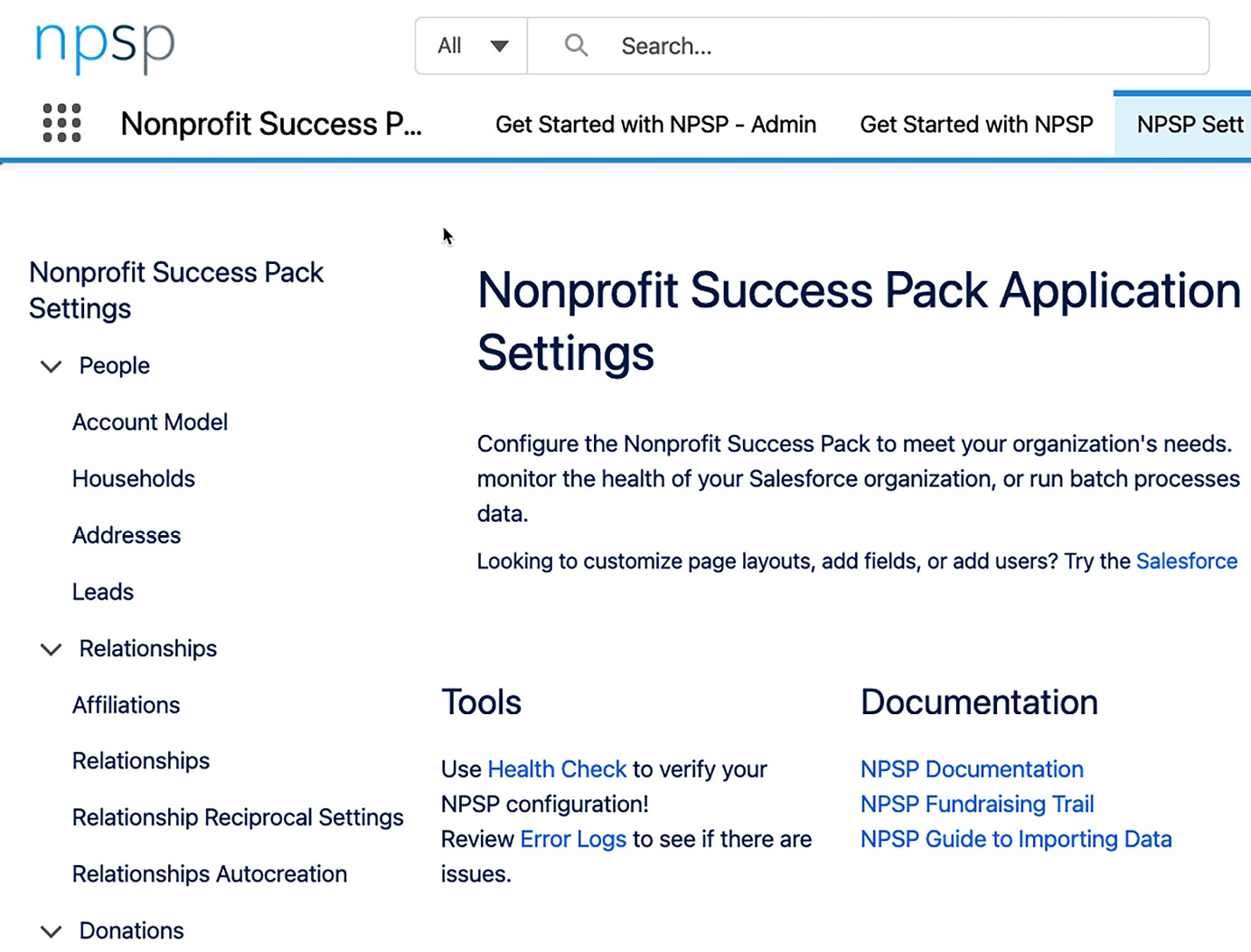
Figure 1.5 – the NPSP Settings page as seen in an actual Salesforce instance
All of these are included in the fundraising features for Nonprofit Success Pack as configurable settings. How the settings are configured will be predicated by the business use cases for the nonprofit customer. We will get into detailed use cases in the chapter on setting up NPSP.
Program management features
The program management features are much more recent in the Salesforce.org timeline. Program management features include both open source and paid modules.
The open source programs include the following:
- Program Management Module
- Volunteers for Salesforce
- NPSP Reports and Dashboards
The paid programs include the following:
- Nonprofit Cloud Case Management with Service Cloud
- Tableau
Program Management Module
Program Management Module (PMM) encompasses a wide range of programs and/or services and provides a framework to track and automate what your team may currently be recording in a spreadsheet. The module is easily installed from AppExchange and comes with a pre-created profile and unmanaged reports to get you started quickly.
PMM only consists of five custom objects, so it is highly customizable. It starts with a baseline and accurate reporting to get your programs up and running in the Salesforce environment. It's a 1, 2, 3 process (once it's been configured) to define the nonprofit's programs and services, add clients to those areas, and report on the metrics with the handy prebuilt reports included in PMM:
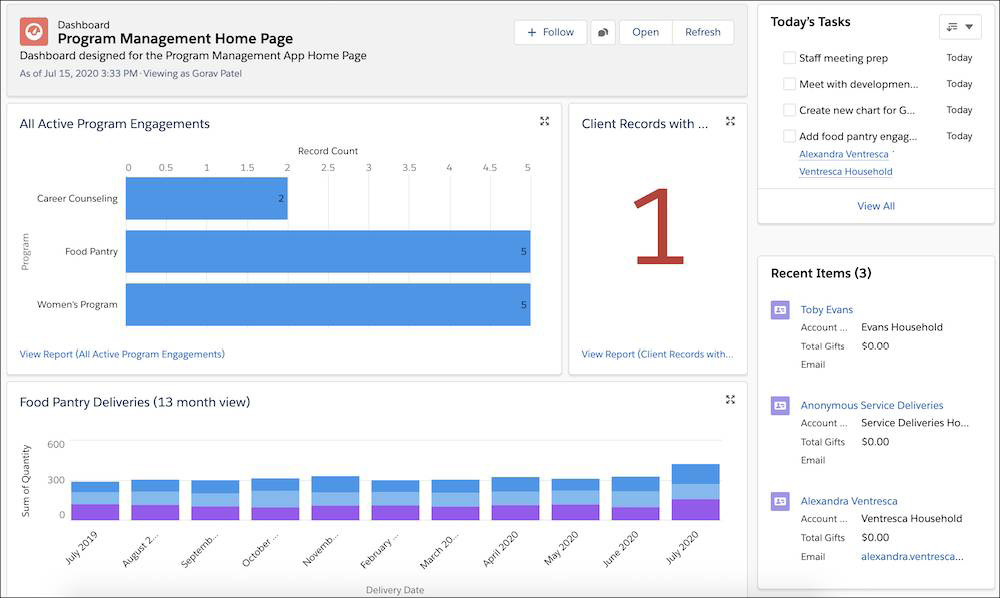
Figure 1.6 – A sample Program Management home page in Salesforce
Volunteers for Salesforce
Volunteers for Salesforce is also a free, open source application available on AppExchange. You may also see it abbreviated as V4S. It is also considered a part of PMM, although it is installed separately, and is designed to help nonprofits manage volunteers and track their volunteer hours, shifts, and jobs. The functionality to host volunteer signup for a specific job and/or shift on a nonprofit website is also an available feature. V4S has been around since Groundwire originally created it in 2012 and became a part of the NPSP offering in 2016. We will explore the use cases for V4S and best practices for implementing it in Chapter 11, Configuring Additional Features and Security:

Figure 1.7 – A sample page for V4S for finding and assigning volunteers
NPSP Reports and Dashboards
NPSP Reports and Dashboards provides a set of pre-configured reports and dashboards commonly used by nonprofits. We'll look at and learn about the following reports as well as other reports associated with the various modules:
- NPSP Campaign Household Mailing List: This is a basic family name and address listing.
- SYBUNT Report: This is a prospecting report of lapsed donors that shows donors who gave during some years but not this year.
- LYBUNT Report: This is a prospecting report of donors who gave last year but not this year.
- Households and Donations Report: This is a composite report showing combined donations per household.
Dashboards can be extremely helpful to visualize, at a glance, an overall picture of data collected:

Figure 1.8 – A sample volunteer data dashboard based on reports in Salesforce
Nonprofit Cloud Case Management with Service Cloud
Although they are paid products, Nonprofit Cloud Case Management with Service Cloud and Tableau for Nonprofits are both considered part of the program management features in Nonprofit Cloud. Nonprofit Cloud Case Management is designed for organizations that are offering direct programs and services to clients; it helps manage caseloads with personalized care plans and accountability. Nonprofit Cloud Case Management simplifies intakes and referrals, and helps service providers keep clients on track with built-in assessment functionality.
Tableau
Tableau for Nonprofits makes available starter dashboards for program management to visualize program data and easily identify trends. We will look at how these paid features could be necessary to enhance and extend program functionality.
Additional features
Beyond the scope of fundraising and program management, nonprofits vary vastly in what they track and hope to automate. Each of the additional features covers a more specific area in Nonprofit Cloud. Use cases and implementation for these are covered in Chapter 12, Declarative Tools and Modules. The following is a general overview of these features.
Grantmaking and grants management
As more and more nonprofits use Salesforce and Nonprofit Cloud, there are more common use cases. Foundations have always been a large part of the Nonprofit Cloud customer base. Grantmaking and grants management are two sides of the same coin that we will explore and understand when we get to Chapter 12, Declarative Tools and Modules.
The Outbound Funds Module serves as the foundation for grantmaking. It was built by the Salesforce.org Open Source Community and led by volunteers from nonprofits, grantmakers, partners, and staff under the Open Source Commons program. It is free and available through AppExchange. The Outbound Funds Module was designed to track funding programs and requests, gain insight on financial commitments, and manage disbursements. The Outbound Funds Module extends the capabilities of Nonprofit Success Pack; the following diagram shows the standard Salesforce objects in blue, standard NPSP fundraising objects in yellow, and the core package of outbound funds in pink:
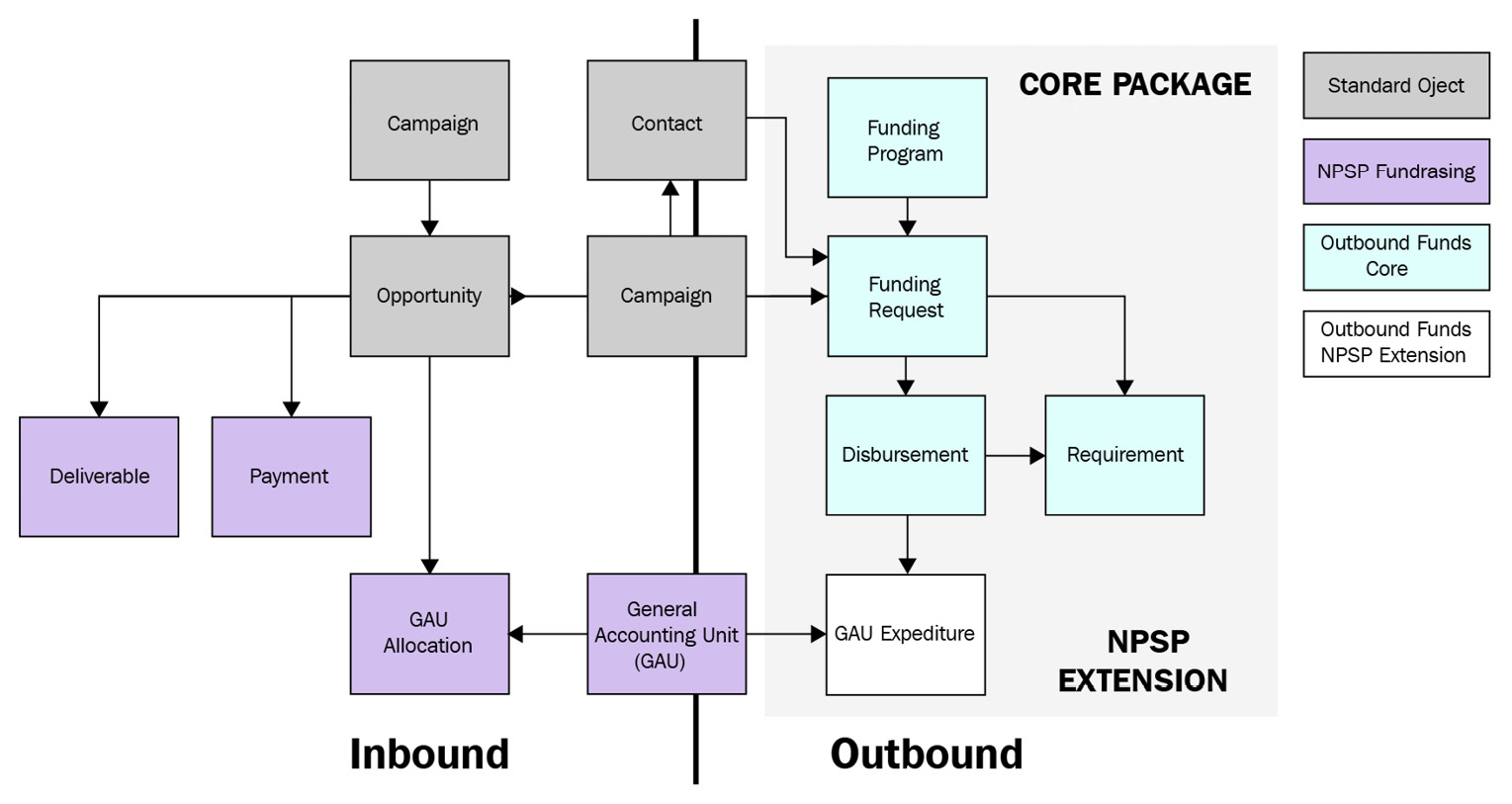
Figure 1.9 – The entity-relationship diagram for Outbound Funds Module from the Open Source Community
Grants management is a paid offering from Salesforce.org to improve grantee experience with a branded grantee portal built on Experience Cloud.
Accounting Subledger and Elevate
Accounting Subledger helps prepare fundraising data and information for the accounting system of your choice. It is a paid product from Salesforce.org that cuts down on time spent on reconciliation tasks while providing a single source of truth for donor data.
And, speaking of donors, Nonprofit Cloud has come full circle with Elevate. Elevate is a paid offering from Salesforce.org and is a comprehensive suite of tools to integrate fundraising operations and streamline the donor journey. Elevate provides payment services, giving pages, and an administrative interface in conjunction with Philanthropy Cloud. Elevate works with both Nonprofit Cloud and Education Cloud and is currently only available to US-based organizations.
Marketing and engagement
Marketing and engagement have many options in Nonprofit Cloud, from the built-in engagement tool in NPSP to the sophisticated paid tools. These tools are designed to complete the circle that gives nonprofits a 360-degree view of their constituents, engage with those constituents by creating personalized journeys, and analyze the impact of the nonprofit. The Nonprofit Cloud marketing and engagement options offer a variety of tools:
- Journey Builder: Build customer interactions based on customer behavior.
- Email Studio: Build smarter emails using data.
- Mobile Studio: SMS, push, and chat app messaging.
- Social Studio: Creates advocates via social media interaction powered by AI.
- Advertising Studio: Secure 1:1 advertising across platforms.
- Customer 360 Audiences: Unify customer data.
- Datorama: Measure marketing performance and impact.
- Interaction Studio or Pardot: Connected customer journeys across email, SMS, and social media.
All of the aforementioned features are available through Salesforce's Nonprofit Cloud. Already, you can see some of the breadth and depth of what can be done.
Summary
After reading this first chapter, you can see how robust Nonprofit Cloud truly is and how it can provide what is necessary for tens of thousands of different nonprofit organizations across the world. The incredible variety of tools available in Nonprofit Cloud may seem a little overwhelming at first glance, but don't worry!
In the upcoming chapters, we will dive more deeply into the core products of Nonprofit Cloud to understand when to use specific features, how to implement and configure those features, and how to work with nonprofit organizations to understand their needs to fully utilize Nonprofit Cloud.
Let's get started with a deeper dive into NPSP in the next chapter.




















